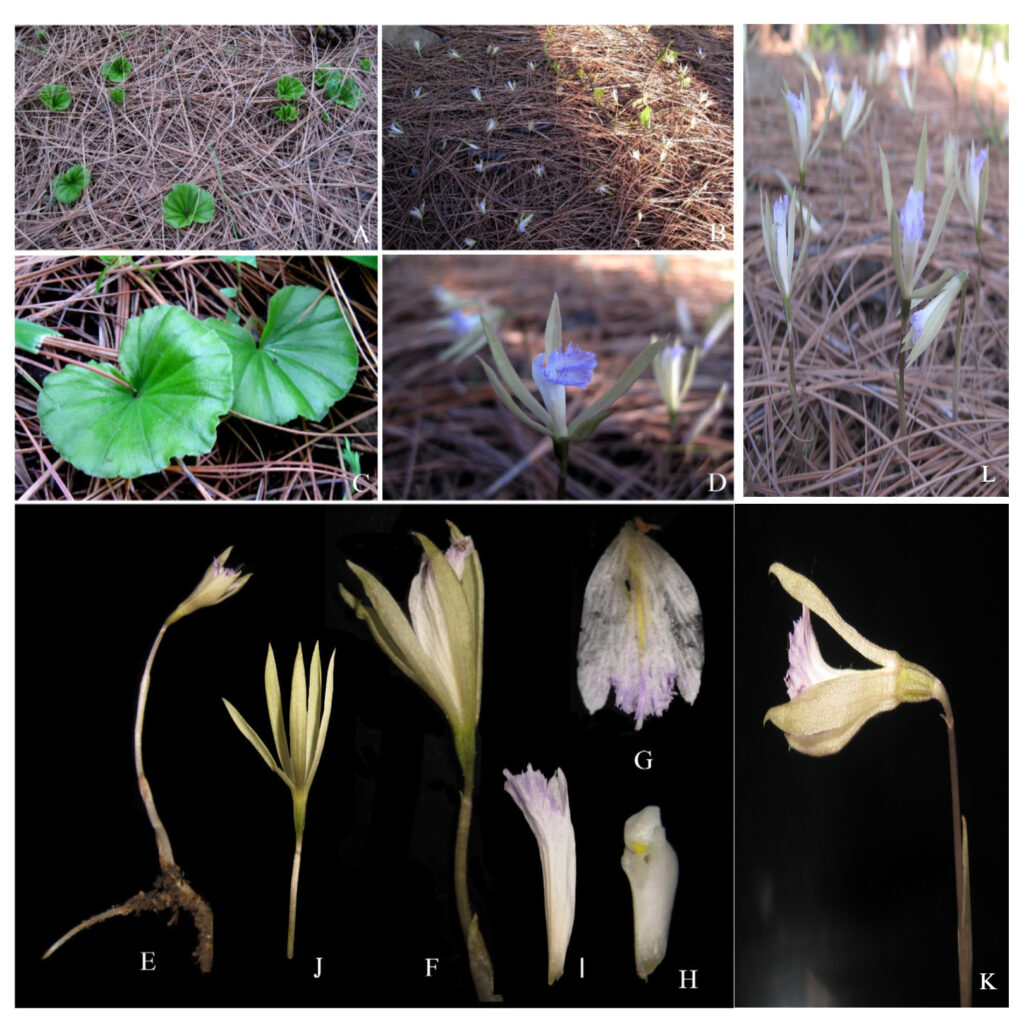Nervilia simplex tuber is subglobose to ovoid, 1 – 2 cm across, whitish, sparsely covered with root-knobes. Just one leaf produce annually; lamina 2.5−4 × 2.5−5 cm, reniform to suborbicular, shallowly crenate, acute, deeply cordate at base, herbaceous, abaxially pale green, adaxially green with fine white reticulate venation, sparsely setulose throughout, with 7 main veins; petiole erect, 2 − 5 cm long. Peduncle produced from top of bulb, erect, 4 − 7 cm long, green, with 2−3 tubular scarious sheaths, bearing one nodding flower; floral bract small, ovate-lanceolate, acute. Flowers opening widely, resupinate, 2−4 cm across; sepals (outer tepals) yellowish green with faint grey lines, lanceolate, 2–2.5 × 0.12–0.25 cm, acute to acuminate; petals (inner tepals) creamy white, narrowly lanceolate, 1.8–2.3 × 0.1–0.2 cm; lip strongly reflexed above middle, creamy white, mid lobe light purple fringed and white at base, with a yellowish patch at centre, rhombic, 1.5–1.8 × 0.8–1.3 cm when flattened, spurless, entire or 3-lobed, loosely embracing the column; apical margin irregularly lacerate or fimbriate; disk with papillose ridge extending from base to apex; column clavate, 0.6 – 0.8 cm long, apex dilated; stigma suborbicular. Fruit-stalk c. 17 cm long; capsules 1 – 1.5 × 0.5 cm; tepals partially covering the capsule even after drying.
Flowering: May – June.
Habitat: Terrestrial, growing in open forest floor covered with dry pine-needles, 300 – 1500 m.
Distribution: India [Andhra Pradesh, Arunachal Pradesh, Goa, Jharkhand, Karnataka, Kerala, Maharashtra, Manipur, Odisha, Sikkim, Tamil Nadu, Uttarakhand and now in Himachal Pradesh], Nepal, China, Indonesia, Malaysia, Philippines, Thailand, Indo-China, New Guinea, Africa, Australia

A, B. Plants in habitat, C. Close up view of leaves, D. Close up view of flower, E. Plant with inflorescence and tuber, F. Inflorescence, G. Dorsal view of lip, H. Column, I. Ventral view of Petal, J. Perigone; K, L. Resupinate inflorescence. (Photos by Rimjhim)

Leave a Reply